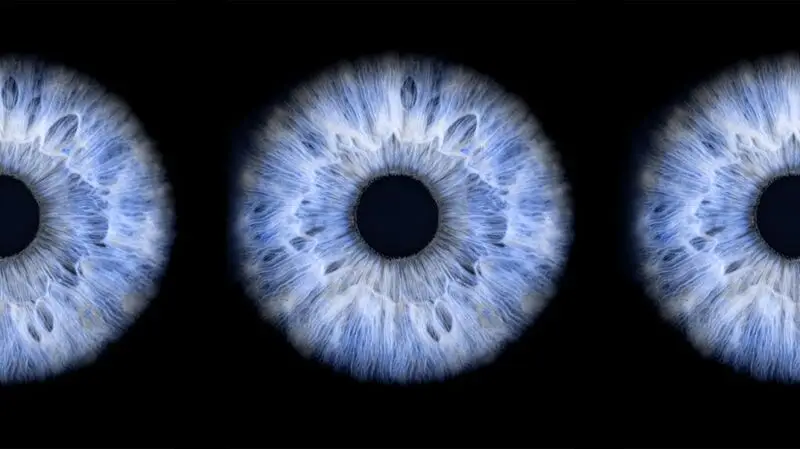
- Changes in the eye can help predict other health concerns in the body, such as diabetes and high blood pressure.
- A new study has identified a set of 29 vascular health indicators on the retina, making a “fingerprint” that can help predict a person’s stroke risk.
- Researchers believe this method provides a less invasive way of testing stroke risk than traditional tests.
While some may say the eyes are a window to the soul, for quite a while, doctors have known that the eyes can also offer a view into a person’s overall health.
“The
He is the lead author of a new study recently published in the journal Heart that found a vascular “fingerprint” on the retina may also be able to predict a person’s stroke risk in a less invasive manner than traditional tests.
For this study, researchers analyzed
Upon analysis, scientists identified a total of 118 measurable retinal vascular indicators, 29 of which were significantly associated with a participant’s first-time stroke risk, providing a vascular “fingerprint.”
“Vascular ‘fingerprint’ on the retina refers to unique retinal parameters or patterns in an individual’s retina,” He explained. “Analyzing vascular fingerprints on the retina across populations can help identify trends and risk factors associated with stroke.”
Seventeen of the 29 indicators are density indicators. Researchers found that every change in these indicators was linked to an increased stroke risk of 10-19%.
Changes to the three caliber indicators in the “fingerprint” were correlated to a 10-14% increased stroke risk. Alterations to the complexity and twistedness indicators were associated with a 10.5-19.5% heightened risk of stroke.
According to researchers, the retina vascular “fingerprint” — even when combined with just age and gender stroke risk factors — was as good as the use of traditional risk factors alone for predicting future stroke risk.
“Traditional ways (blood tests) to predict stroke risk are limited by relatively low accuracy, invasiveness, and high cost,” He said.
“(This) study underscores the potential of retinal vascular fingerprint analysis as a powerful tool for stroke risk prediction and prevention, offering a noninvasive, accessible, and effective method for enhancing current screening practices. The noninvasive nature of retinal analysis paves the way for easier, more accessible stroke risk screening, especially in primary care settings.”
— Mingguang He, MD, PhD
“We are planning to use the same method to conduct risk prediction for other diseases such as heart disease and dementia,” he added.
MNT spoke with Alexander Solomon, MD, surgical neuro-ophthalmologist and strabismus surgeon of Pacific Neuroscience Institute at Providence Saint John’s Health Center in Santa Monica, CA, about this study.
“While overall, the findings of this study will be of little surprise to most ophthalmologists, it’s nice to see a study that formalizes this relationship and starts to really break down some of the metrics of retinal vasculature that reflect higher risk changes associated with increased risk of stroke,” Solomon said.
“The reason the associations between retinal vasculature changes being associated with stroke is of little surprise is that developmentally speaking, the retina is actually an extension of the brain. Accordingly, it is made up of a series of neurons (brain cells) that happen to be sensitive to and process light, so a retinal exam could always be examining a portion of your brain.”
— Alexander Solomon, MD
“In addition, we know these vessels change in response to a variety of systemic vasculopathic conditions including hyperlipidemia, hypertension, diabetes, and inflammatory disorders that can all lead to increased stroke risk. Again, having which features are particularly risky is certainly useful and fascinating,” Solomon explained.
“Many of the elements of this ‘fingerprinting’ are things that can be qualitatively appreciated but not quantitatively measured during your average eye exam. It would likely be both useful and interesting to make the analysis more readily available to allow eye doctors to counsel their patients better and likely help to improve the generalizability mentioned above,” he added.
MNT also spoke with Christopher Yi, MD, a board-certified vascular surgeon at Memorial Orange Coast Medical Center in Fountain Valley, CA, about this study.
“As a physician working with patients who suffer from strokes, this is definitely an exciting and innovative discovery,” Yi said.
“The discovery of a noninvasive method to predict stroke risk through retinal vascular ‘fingerprints’ is groundbreaking. It not only offers a practical approach to early detection but also has the potential to make stroke risk screening more accessible and less resource-intensive, especially in underserved communities.”
— Christopher Yi, MD
“Stroke remains a leading cause of disability and death globally, with many cases linked to modifiable risk factors. Current risk prediction models rely heavily on invasive tests like blood draws, ultrasounds, CT scans, and MRIs, which can be costly and less feasible for large-scale screening,” Yi said.
“A retinal-based approach leverages a noninvasive, simple diagnostic tool that could integrate seamlessly into routine eye exams, particularly in primary care settings. By improving early detection, healthcare providers can intervene sooner to manage risk factors and potentially prevent strokes,” he continued.
“This research represents a significant step forward in preventive medicine and offers hope for reducing the global burden of stroke. It underscores the potential of interdisciplinary approaches combining ophthalmology, cardiology, and technology to address complex health challenges,” he added.





